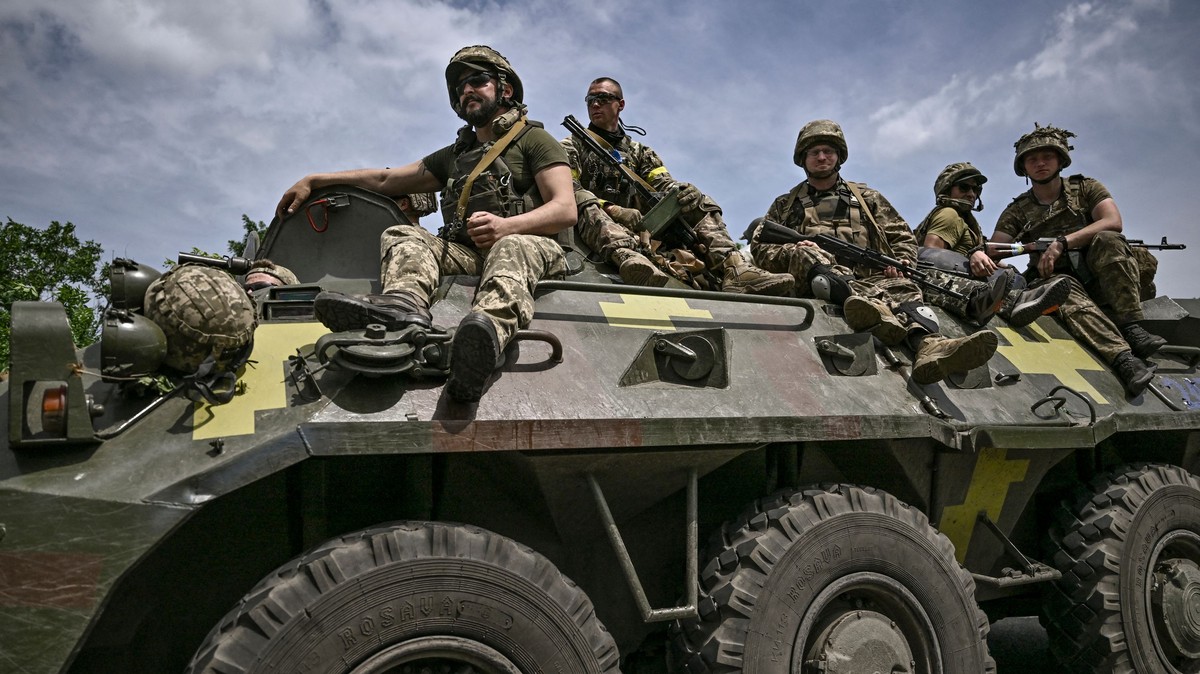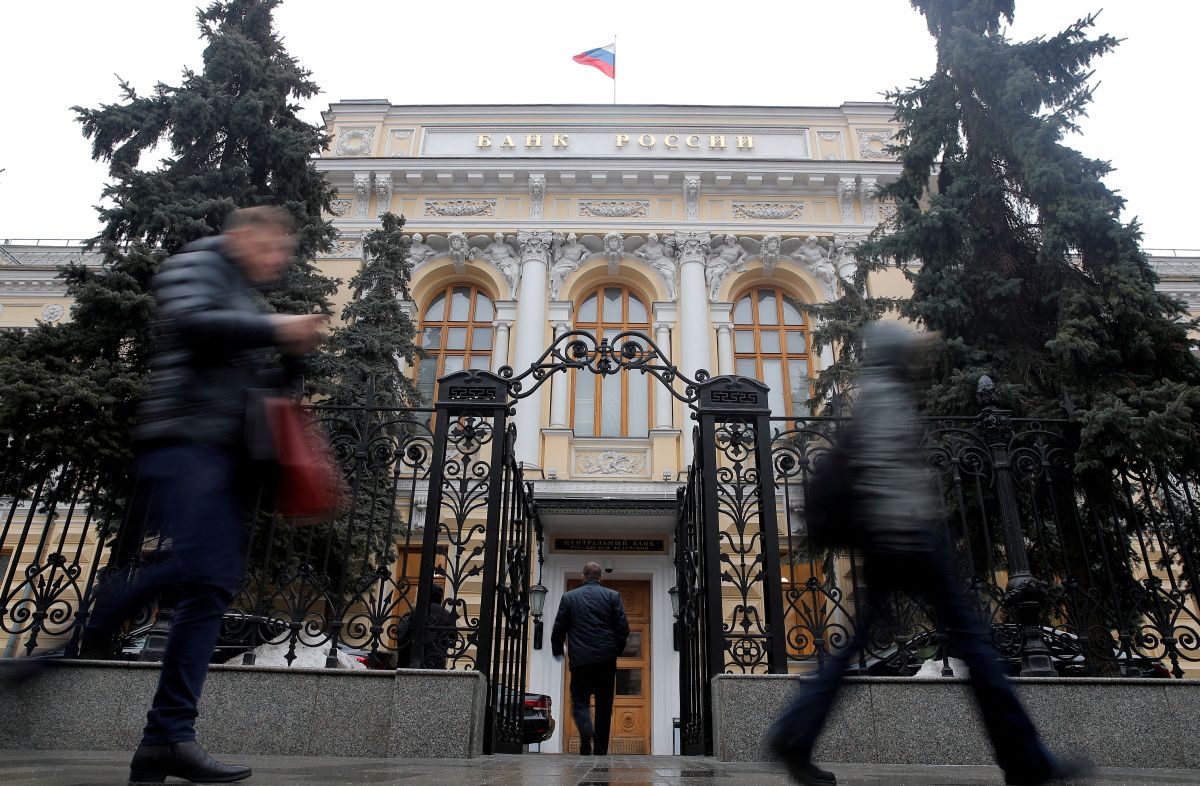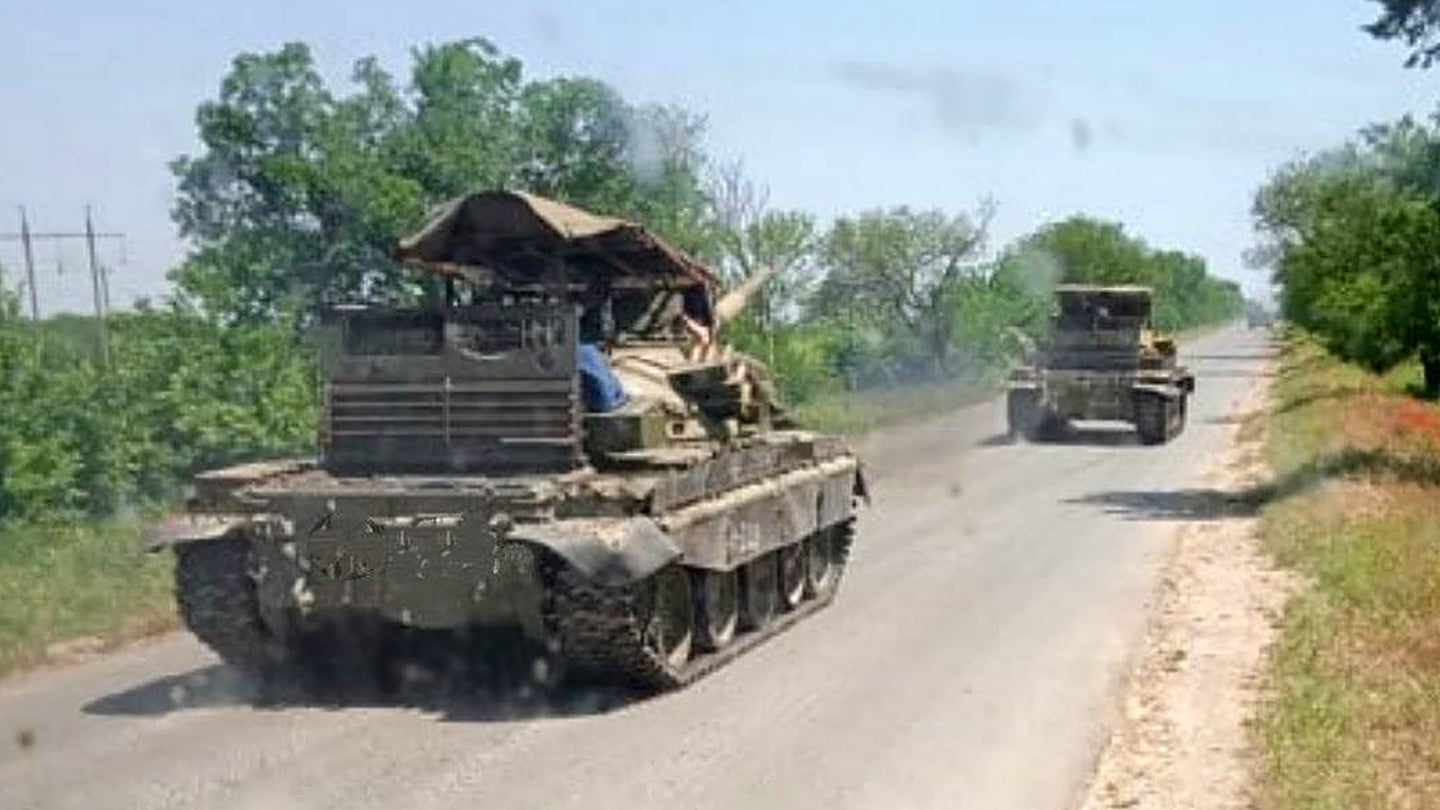You are using an out of date browser. It may not display this or other websites correctly.
You should upgrade or use an alternative browser.
You should upgrade or use an alternative browser.
Russia's Invasion of Ukraine (Official Thread)
- Thread starter newarkhiphop
- Start date
More options
Who Replied?
Military History Repeats in Ukraine
The current Russian advance in Ukraine, driven by artillery, should surprise nobody who’s acquainted with history – in fact, it’s happened before
Military History Repeats in Ukraine
The current Russian advance in Ukraine, driven by artillery, should surprise nobody who’s acquainted with history – in fact, it’s happened before
John Schindler9 hr agoAfter initial bloody setbacks, the Russian military is advancing deep in Ukraine. Defenders have acquitted themselves with unexpected grit, blunting initial Russian blows. But eventually weight of shell begins to turn the tide as the attacker’s artillery outnumbers and outguns the defenders. Soon, a debacle looms as retreat threatens to turn into a rout. The high hopes of just weeks before, the victory euphoria seeing Russian forces reeling from heavy blows, slowly turn to doubt, even despair.
It's the summer of 1914.
Watching battlefield events unfold in Ukraine’s Southeast in recent days, as Russia’s aggression against its neighbor is in its fourth month, it’s difficult for anybody acquainted with that country’s military history not to feel an unsettling sense of déjà vu.
This war, Europe’s biggest since the Second World War (and the world’s biggest since America’s Vietnam War), has just passed its hundredth day and the shift in perceptions of the conflict is palpable. Gone is the early, social media-driven exuberance emanating from Kyiv, as the Russian military embarrassingly failed to subdue its neighbor in a poorly thought out and ineptly executed coup de main. The world’s shocked delight at Ukraine’s successful stand against Vladimir Putin was expressed in memes of Ukrainian tractors pulling abandoned Russian armor, plus accounts of brave heroes (some quite mythical) defeating the hated invader.
Instead, in a manner which was easily predictable to anyone acquainted with geography, Putin’s mindset, and military strategy, the Ukraine war has shifted to the country’s Southeast, where Russia made landgrabs in the Donbas in 2014. Here, Moscow is making its move, with the obvious objective of recreating Novorossiya with a land-bridge to Crimea through the devastated city of Mariupol, now in Russian hands after an almost three-month siege that claimed thousands of lives. Such an imperial-throwback concept like rebirthing some facsimile of Novorossiya across southern Ukraine – if extended to Moldova it would economically cripple what’s left of Ukraine by taking away its Black Sea access – makes some strategic and geographic sense and was always the Kremlin’s achievable objective in this war. Now, Putin is doing that.
What happens next cannot be predicted with certainty but Ukraine’s looming defeat in the Southeast paradoxically offers a way to cease the fighting, at least temporarily. Given the economic pain caused by sanctions, which is only getting worse, Putin would be wise to pause his offensives after achieving modest success in the Southeast: at this point, the Kremlin is looking for a win, any win, to sell to the Russian public as justification for the enormous cost in blood and treasure of Putin’s war-of-choice.
Militarily, Russia’s offensive in the Southeast, though plodding, seems to be finally going Moscow’s way. At last, the Russian military is playing to its strengths in firepower. The Kremlin has decided to crush Ukrainian resistance, one punishing artillery barrage at a time. Additionally, serious Russian defects in command and control, combined arms cooperation, plus logistics – which assembled to unravel Moscow’s initial moves against Ukraine – have begun to sort themselves out, under the pressure of heavy losses.
That said, the decisive factor is artillery. The Ukrainians are being literally blasted off the battlefield. Defenders in the Southeast report being massively outgunned by Russian artillery, which possesses more guns, ammunition, and weight of shell than the Ukrainians do. Kyiv’s casualties now are mostly caused by enemy artillery and days and weeks of such pounding is inevitably ruinous to defender morale, particularly when they cannot silence the attacking artillery with their own gunnery (what’s called counterbattery fire).
The possibility of a Ukrainian collapse in the Southeast, with a resulting encirclement and strategic defeat in the Donbas, therefore looms. Kyiv is pleading for more Western-gifted artillery, particularly modern 155 mm howitzers and U.S.-made Multiple Launch Rocket Systems, yet it seems unlikely that any amount of NATO largesse in gunnery can arrive in time to turn the tide in the coming days. The threat of a losing cauldron battle – what the Germans call a Kesselschlacht(they should know, they defeated the Soviets in the exact same place in the summer of 1943) – is the stuff of nightmares in Kyiv, yet it may be happening.
The surprise here is that anybody is surprised. Just as Western elites mysteriously refused to take Putin’s increasingly bellicose rhetoric towards his neighbor seriously in the months and years leading up to this round of the Ukraine war, so they misunderstood that Russians will always fight like Russians. For all their defects, which are legion, the Russian military understands the crushing power of gunnery. For centuries, artillery and lots of it, applied on a massive scale to pound the enemy into submission, has been their signature move. Stalin called such gunnery his “God of War,” yet Russian artillery acumen long predates the Bolsheviks. It’s even been immortalized in song:
Oh, there is the story that me grandfather told
As he sat by the fire all withered and old;
“Remember,” says he, “that the Irish fight well,
But the Russian artillery's hotter than hell.”
That’s from “The Kerry Recruit,” an Irish ditty dating to the Crimean War of 1853 to 1856. Neither need we look to song to understand what’s happening in the Donbas right now. A basic glimpse at military history will reveal the same, and more. Current events in Ukraine eerily resemble summertime military operations in that country, 108 years ago. That was the Battle for Galicia, in today’s Western Ukraine, which was a grave defeat for Austria-Hungary, indeed a setback from which that country’s military never really recovered.
It started badly for Russia. Having gone to war to defend their misbehaving client state, Serbia, whose intelligence service assassinated the heir to the Habsburg throne, thereby birthing 1914’s July Crisis and then the First World War, Russian hopes were high of early victories against the Germans and Austro-Hungarians. On paper, the Russians possessed impressive numerical superiority, thus quick victory was expected. Instead, the opposite happened.
Guided by flawed strategy yet adhering to the ancient wisdom that he was too weak to defend therefore he must attack, Austrian General Staff chief Franz Conrad von Hötzendorf ordered his forces to take the offensive. Miraculously, it worked. In the third week of August 1914, Conrad’s armies collided with the Russians in southeastern Poland (near today’s border with Ukraine) leading to ferocious combat on a scale never seen in warfare. First, around Kraśnik, the Austrian 1st Army defeated the Russians, despite the odds being roughly even, while the Russians possessed their usual edge in gunnery. Through sheer grit, Conrad forces shoved the enemy back.
During the last week of August, the same happened slightly to the east, around Komarów, where the Austrian 4th Army collided with the Russians and in a vast maneuver battle inflicted serious losses on the enemy. Conrad’s forces – over one-tenth of whom were Ukrainians in Austrian uniform – were fighting with a courage and determination the Russians never anticipated. Worse, Russia’s simultaneous offensive into East Prussia collapsed in a humiliating fashion. Although they significantly outnumbered the defenders, the Russians ineptly walked right into a Prussian cauldron and needless defeat. The Tsar’s 2nd Army was largely annihilated, with the Russians losing almost 100,000 prisoners of war alone.
Then, however, fate intervened. Reeling from defeats, the Russian steamroller at last found traction in Galicia, in the Ukrainian lands east of Lemberg (today L’viv). In the last week of August, the Imperial Russian Army’s Southwestern Front marshalled its forces, aimed at Lemberg, and here its overwhelming numbers decided the issue. Attackers outnumbered defenders more than two-to-one in both men and guns, and the latter was decisive: Russian artillery was not only more numerous but more modern and longer-ranged. Here Vienna’s prewar parsimony doomed her army: more modern artillery had been designed but not produced due to funding shortfalls.
In Galicia, the Austrians were blasted off the battlefield by superior Russian gunnery. At Lemberg, bravery could not prevail against shrapnel and entire Austrian battalions, charging the enemy with the bayonet, were wiped out by Russian artillery barrages. Soon, morale began to waver and Lemberg could not be held. The retreat began at the beginning of September and did not stop until the middle of that month. Defenders who could not pull back fast enough were encircled and annihilated by the surging Russians. By the time Conrad’s forces established a viable defensive line around the fortress at Przemyśl, 60 miles west of Lemberg (today the main border crossing of Ukrainian war refugees into Poland), his army had shattered. Entire regiments disappeared in the violent mayhem of the disorderly retreat towards western Galicia.
In under a month, Conrad had destroyed his army, losing 420,000 men – half the forces he sent to fight Russia – including 100,000 dead and as many again lost as prisoners. This was a blow from which the Austro-Hungarian military would never recover. Russian losses weren’t much less, but the Tsar’s army still possessed prodigious manpower reserves. Ultimately, numbers of men and especially artillery decided the fight for today’s Western Ukraine in the summer of 1914, just as they seem to be doing in Southeastern Ukraine right now.
If anyone’s looking for good news here, it’s that Russia failed to fully capitalize on its defeat of the Austrians in East Galicia. Follow-on offensives stalled around Przemyśl and in the Carpathian Mountains, costing both sides more than two million casualties before the Austrians, with Prussian help, pushed the Russians back and recaptured Lemberg and most of Galicia in the summer of 1915.
Moreover, there are noteworthy differences between World War One and today. Although the appalling casualties of 1914 are vastly higher than losses in 2022, it’s also because the armies were significantly bigger: Putin’s army is a fraction of the size of the Tsar’s. The current war is also unfolding far more slowly than it did in 1914, despite massive advances in technology over the past century. It seems paradoxical that Putin’s fully mechanized army advances more slowly than the Russian military did over a century ago, moving on nothing faster than horses, but so it is.
Some of the similarities, however, are troubling. In 1914, as today, the Russians dealt harshly with civilians in Galicia whom they considered disloyal or dangerous: some were shot outright while many thousands of others, Ukrainian, Poles, and especially Jews, were abducted and dispatched deep into Russia as hostages.
All the same, the continuities between the fight for Ukraine in 1914 and the fight today appear more significant than the differences. Again, a Russian army backed by vast amounts of gunnery is grinding defenders down. Again, poor prewar preparations can equal defeat in wartime, even when the attacker’s opening moves are inept and costly for him. Again, a European army is defending its values on Ukrainian soil against a despotic Russian invader.
The outcome of the battle for the Donbas may well determine Ukraine’s fate for years to come. Local defeat looms but that need not become strategic defeat: that depends on Kyiv’s military moves right now. Time is the most undervalued aspect of warfighting but also the most difficult to grasp. War invariably develops its own logic. In that sense, war never changes, particularly when it involves Russians.
P.S. For readers seeking more on the Galician campaign of summer 1914 and its decisive impact on European history, I modestly recommend my book on the subject.
88m3
Fast Money & Foreign Objects

Another Top Russian General Reportedly Killed in Ukraine
Roman Kutuzov was killed on the battlefield in the Donbas region, Russian state media reported.
Last edited:

Russia's Cyber Warfare Reputation Lies In Ruins As Anonymous Hacktivists Raid Central Bank Again
Russia is known as one of the countries with an army of hackers but despite this, the hacktivist collective has launched countless attacks, including breaches and defacement of websites of highly secure government facilities and private institutions, among others.
Spidey Man
Superstar

Russia's Cyber Warfare Reputation Lies In Ruins As Anonymous Hacktivists Raid Central Bank Again
Russia is known as one of the countries with an army of hackers but despite this, the hacktivist collective has launched countless attacks, including breaches and defacement of websites of highly secure government facilities and private institutions, among others.www.ibtimes.com
I applaud that they are about that life, but they better watch their backs. Russia has been known to poison people outside the country
Hood Critic
The Power Circle
88m3
Fast Money & Foreign Objects
seems like a risky gambit because their communication is so bad lol
I also wouldn't even put it past them to bomb their own troops considering they couldn't even be bothered to collect their dead
clearly there's no camaraderie
88m3
Fast Money & Foreign Objects

Ancient Russian T-62 Tanks Spotted Wearing Cage Armor In Ukraine
Similar armor appeared on some Russian tanks prior to the invasion, but proved ineffective at mitigating attacks from anti-tank missiles.
The media isn't connecting this back to Trump and Manafort enough. Manafort literally had the plan to carve up Ukraine.

